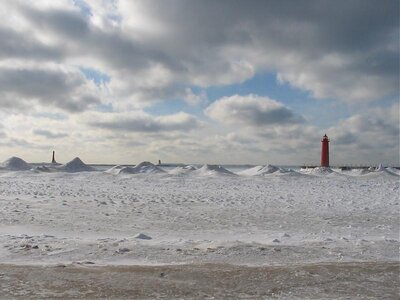This winter may be different due to El Nino
http://www.intellicast.com/DrDewpoint/Library/1199/
interesting read
:
[FONT=Arial, Helvetica, sans-serif]
We have reached the half way mark of the winter season. The first half has seen a return of real-winter conditions for a good part of the country after a three-year absence. In fact, it was downright brutal at times. November and December taken together was the coldest such period on record for the nation as a whole in 106 years of record keeping. Temperatures have moderated in January but since this is the coldest month in most places, it has still been cold enough for snow or ice. Snowfall has been generously distributed with all parts of the country taking their turn.[/FONT]
[FONT=Arial, Helvetica, sans-serif]
An early start to winter seems to be a characteristic of La Nada (neutral) ENSO winters like this one began. What might we expect for the second half of this winter? Well the analog years that worked so well for the first part of winter suggested a change to much milder weather for the second half of winter. The medium range computer forecast models during the last few days show that after this weekend's snowy cold weather in parts of the South and East, a period of relatively mild conditions across a good part of the nation should prevail.[/FONT]
[FONT=Arial, Helvetica, sans-serif]
However, that could simply be the January thaw and not necessarily be indicative of February and March. It also is a reflection of the change in the North Atlantic Oscillation, which had been in a persistent negative ("blocking") phase early this winter. It is now forecast to be positive over the next few weeks. The negative phase helps bottle up cold air over North America and often leads to a big dip in the jet stream in the eastern half of the nation and snowstorms. The positive phase drains the cold air from the continent and leads to a more zonal (westerly) jet stream and milder, drier conditions. [/FONT]
[FONT=Arial, Helvetica, sans-serif]
Importantly, another factor has changed since November. After neutral conditions during the summer and fall, La Nina has returned this winter. This marks the third successive La Nina winter season, an unprecedented string at least going back to 1950. We had two successive La Nina winters a few times. We came close to three cold event years in the mid-1950s, the mid-1970s and again the mid-1980s with two cold and one neutral winter in a three-year stretch. The last two followed strong El Ninos (in 1972/73, 1982/83). However this is the first time we have had true La Nina conditions develop in three successive winter seasons. [/FONT]
[FONT=Arial, Helvetica, sans-serif]
El Ninos, we know, bring about a global atmospheric warming that can linger for some time after the El Nino fades. The stronger and longer the El Nino, the greater the warming. La Nina likewise brings about a global cooling. Because this event has lasted three years, it may help explain the record cold in the news in Asia and the United States. [/FONT]
[FONT=Arial, Helvetica, sans-serif]
We had based our winter forecast on neutral or La Nada conditions. The years that were most similar to this year correctly pointed to a cold start in the East and central states. However, none of those winters evolved back into La Nina. Since the atmosphere is shifting into a La Nina mode according to the indices of the Climate Prediction center, these early winter analog years might not be indicative of what to expect for the late winter period. [/FONT]

